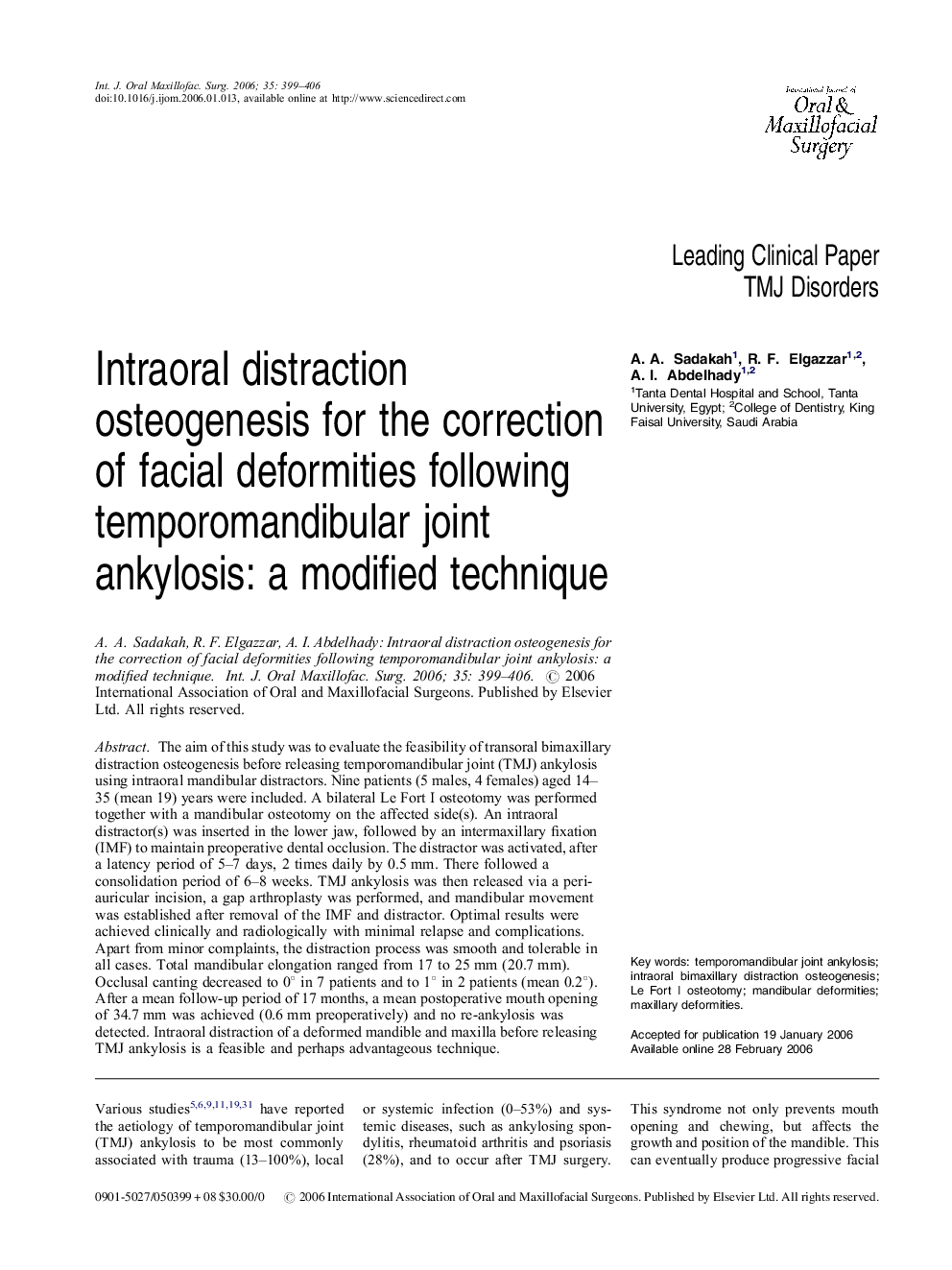| Article ID | Journal | Published Year | Pages | File Type |
|---|---|---|---|---|
| 3135207 | International Journal of Oral and Maxillofacial Surgery | 2006 | 8 Pages |
The aim of this study was to evaluate the feasibility of transoral bimaxillary distraction osteogenesis before releasing temporomandibular joint (TMJ) ankylosis using intraoral mandibular distractors. Nine patients (5 males, 4 females) aged 14–35 (mean 19) years were included. A bilateral Le Fort I osteotomy was performed together with a mandibular osteotomy on the affected side(s). An intraoral distractor(s) was inserted in the lower jaw, followed by an intermaxillary fixation (IMF) to maintain preoperative dental occlusion. The distractor was activated, after a latency period of 5–7 days, 2 times daily by 0.5 mm. There followed a consolidation period of 6–8 weeks. TMJ ankylosis was then released via a peri-auricular incision, a gap arthroplasty was performed, and mandibular movement was established after removal of the IMF and distractor. Optimal results were achieved clinically and radiologically with minimal relapse and complications. Apart from minor complaints, the distraction process was smooth and tolerable in all cases. Total mandibular elongation ranged from 17 to 25 mm (20.7 mm). Occlusal canting decreased to 0° in 7 patients and to 1° in 2 patients (mean 0.2°). After a mean follow-up period of 17 months, a mean postoperative mouth opening of 34.7 mm was achieved (0.6 mm preoperatively) and no re-ankylosis was detected. Intraoral distraction of a deformed mandible and maxilla before releasing TMJ ankylosis is a feasible and perhaps advantageous technique.
